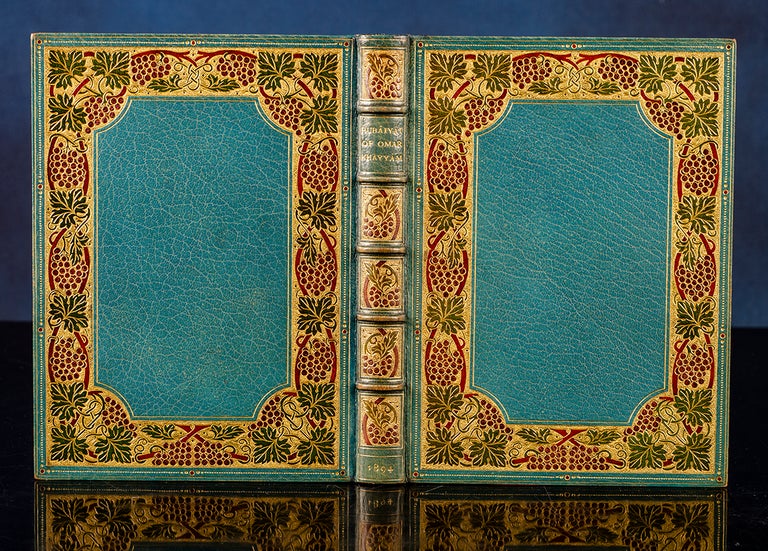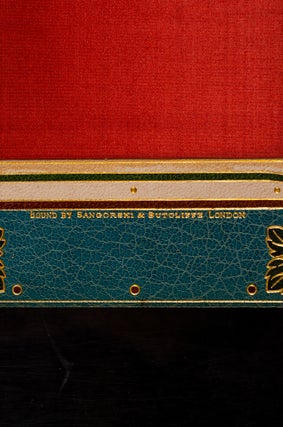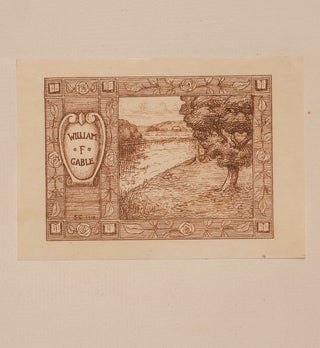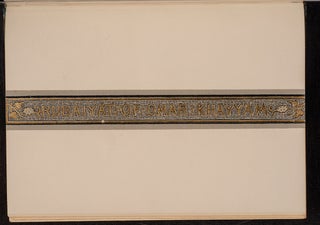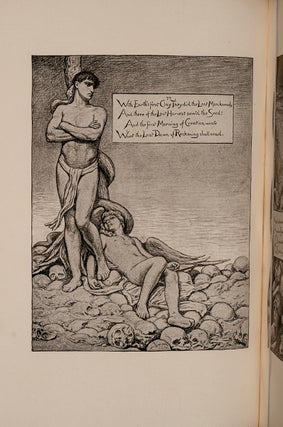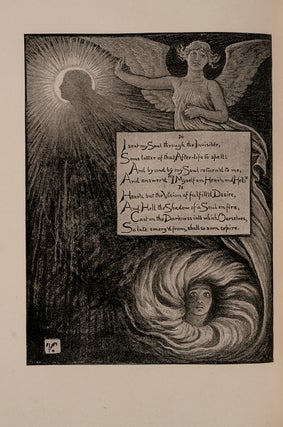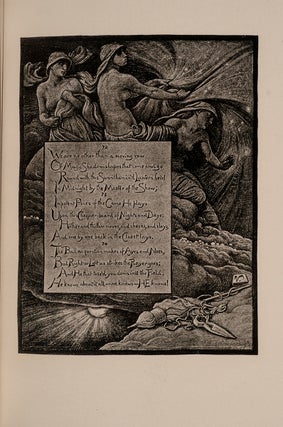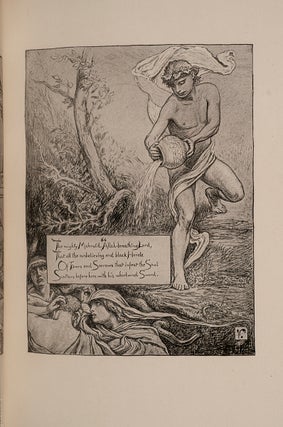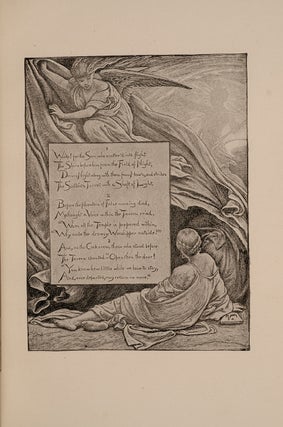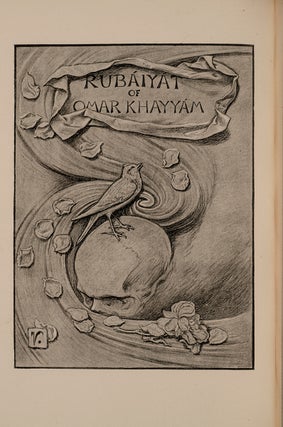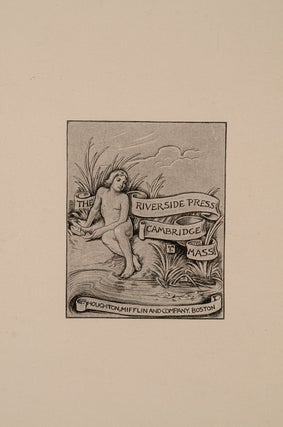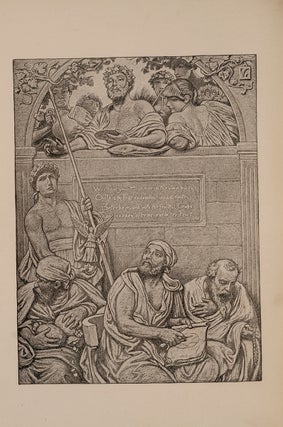Rubáiyát of Omar Khayyám
Boston: Houghton Mifflin and Company, 1894. Item #05317
"Vedder's ‘Rubáiyát’ set the standard for the artist-designed book in America and England.”
In a Superb Early Twentieth Century Inlaid Binding by Sangorski & Sutcliffe
[BINDING]. SANGORSKI & SUTCLIFFE, binders. FITZGERALD, Edward, Translator and Editor. VEDDER, Elihu, Illustrator. KHAYYAM, Omar. Rubáiyát of Omar Khayyám The Astronomer Poet of Persia. Rendered into English Verse by Edward Fitzgerald with an accompaniment of Drawings by Elihu Vedder. Boston: [Printed at the Riverside Press for] Houghton Mifflin and Company, 1894.
Small quarto (8 1/4 x 6 inches; 209 x 152 mm.). 30 leaves, [1]-45, [2], [47]-61, [1, blank] pp., all printed on French-fold paper. With illustrated title, six pages of notes with decorative frames, frontispiece, and fifty plates illustrating the poem, inset with panels of text, all by Elihu Vedder.
Elegantly bound by Sangorski & Sutcliffe ca. 1910 (stamp-signed on front turn-in) in full blue crushed morocco elaborately gilt and inlaid. Covers with wide, heavily stippled gilt frame inlaid with twining grape vines in brown, green, and purple morocco, spine with five raised bands, gilt pointille with similar inlaid grape vine weaving through the length of the spine, lettered in gilt in compartments. Gilt ruled board edges and wide turn-ins of blue morocco enclosing red silk liners framed by ivory morocco that is inlaid with green and brown, the turn-ins featuring very large corner ornaments of inlaid green grape leaves, red watered silk endleaves, top edge gilt. Joints expertly and invisible repaired. Original black and gold printed gray wrappers designed by Vedder bound in. Engraved bookplate of renowned collector William F. Gable, of Altoona on verso of front endpaper. A fine, fresh copy in an absolutely spectacular binding from the great house of Sangorski & Sutcliffe.
Tipped onto the front flyleaf is a one-page autograph letter signed by Elihu Vedder and written to a Boston gallery owner named Doll regarding paintings the artist has and will have for sale. It is dated December 16, 1868, a time when Vedder had returned to America from his home base in Rome to persuade the reluctant (and wealthy) parents of Carrie Rosenkrans to allow him to marry their daughter. Happily, Vedder and Rosenkrans were able to wed; they honeymooned in Italy, which they made their home for the remainder of their lives.
A beautifully bound copy of an important illustrated edition of FitzGerald's lush and lilting translation of the celebrated 11th century classic collection of evocative short verses, tinged with a sense of the vanity of all things. A work that appealed strongly to Victorian sensibilities, the “Rubáiyát,” first printed anonymously in 1859, became immensely popular and went through a great many editions. Sangorski & Sutcliffe created a number of splendid bindings for copies of the “Rubáiyát,” most famously the “Great Omar” that was lost on the Titanic. Here, they have apparently taken inspiration from a quotation in the frontispiece: "Better be jocund with the fruitful Grape / Than sadden after none or bitter Fruit.”
According to the Smithsonian, which owns the original designs, “from the moment of its publication [in 1884], Elihu Vedder's ‘Rubáiyát of Omar Khayyam’ achieved unparalleled success… Critics rushed to acclaim it as a masterwork of American art, and Vedder (1836-1923) as the master American artist. Vedder's ‘Rubáiyát’ set the standard for the artist-designed book in America and England.”
William F. Gable (1856-1921) founded the Gable's Department Store, in Altoona, PA, opening on March 1, 1884. The first incarnation of the store was a single room. In 1891, Gable built a Victorian Neoclassical style building, in downtown Altoona. It was in this building that the Gable's Department Store became the forerunner of the modern department store. By 1913, Gable's was the most complete department store in the state of Pennsylvania. It had come to be known as "the people's store." The renowned collection of the late William F. Gable, of Altoona, Pennsyvania was sold at auction by the American Art Association, Inc. on January 1st, 1923.
Price: $13,500.00

 I have been in the rare and antiquarian book business for over forty years; my family has been in the rare books business since 1876. Rare books are in my blood.
I have been in the rare and antiquarian book business for over forty years; my family has been in the rare books business since 1876. Rare books are in my blood.
